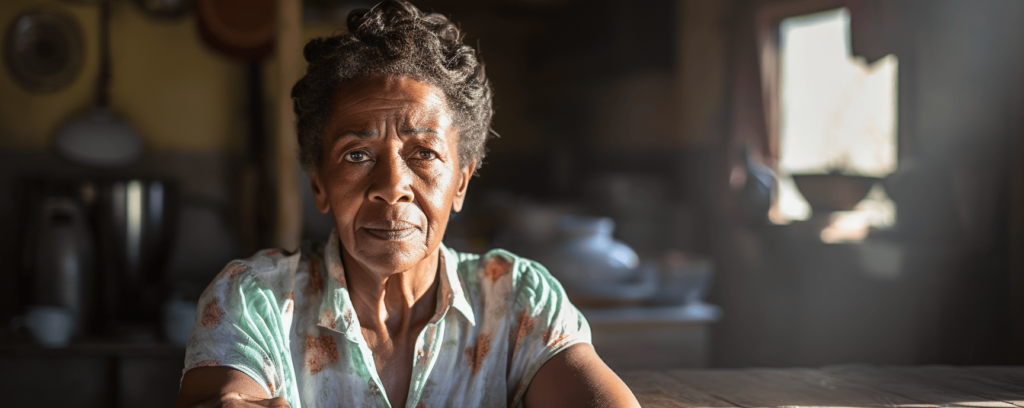Rent can be a big piece of your monthly expenses, especially when your budget is already tight. If you live out in the country or a small town, there's a program that might be able to help: the Rural Rental Assistance Program (RRAP). It's a bit of help for folks who've put in the work and are feeling the pinch when it comes to keeping a roof over their heads.
RRAP isn't a quick fix; it's a serious program for serious times. It's there to give a leg up to those who need it most. The program aims to make sure that people who've been contributing to their communities don't have to stress about the place they call home.
This article will explain how RRAP works, who it's for, and how you can apply. It's clear-cut info, no fluff, because we know there's a lot on the line. The process can take some patience and effort, but for many, the support RRAP provides is well worth it.
If you're ready, let's take a look at how you can start the process and stay steady in your home without the overwhelming worry about rent each month.
What Is the Rural Rental Assistance Program?
If you're hearing about the Rural Rental Assistance Program for the first time, you might wonder what it's all about. Simply put, RRAP is a government program that helps people living in rural areas pay their rent. It's for folks who qualify based on their income and where they live — typically, this means towns or areas with fewer people.
🔔 FYI: This article provides a general overview; your specific situation may vary. Always refer to the official RRAP website for the most up-to-date information.
Who Can Get Help From RRAP?
Not everyone can get this help, and it's important to know if you fit what they're looking for. Generally, if you're renting in a rural area and your income is not very high, you should look into this. Seniors, people with disabilities, and families that don't have much money are often the ones who can get RRAP. But each case is different, so even if you're not sure, it's worth checking out.
- Eligibility Requirements:
- Live in a qualifying rural area.
- Meet specific income guidelines.
- Provide necessary documentation of income and family size.
How Can RRAP Help You?
So, what can RRAP actually do for you? If you qualify, it can pay a part of your rent. How much it pays depends on your situation, like how much money you make. The idea is to make sure that you're not spending all your money on rent, so you have enough left for other important things like food and medicine.
🔥 Hot Tip: Remember to re-certify your income annually to maintain your RRAP benefits.
Understanding the Difference: RRAP vs. Section 8
When you're looking for help with your housing costs, you might come across different programs with various names like RRAP and Section 8. They both sound like they do the same thing — help with rent — but they're quite different. Let's clear up how so you can figure out which one might be right for you.
What Is Section 8?
Section 8, also known as the Housing Choice Voucher Program, is a federal program run by the Department of Housing and Urban Development (HUD). It's designed to help low-income families, the elderly, and people with disabilities afford safe and decent housing in the private market. With Section 8, you can find your own housing, including single-family homes, townhouses, and apartments.
Key Features of Section 8
- Choice of Housing: Section 8 allows you to choose any housing that meets program requirements, not just units in subsidized housing projects.
- Portability: One of the biggest perks is that you can take your Section 8 voucher with you if you move, even to a different state.
- Tenant-Based Assistance: The assistance is tied to you, the tenant, rather than the rental unit.
How RRAP Stands Apart
RRAP, on the other hand, is specifically targeted at rural communities. It's part of the Rural Development program of the United States Department of Agriculture (USDA). RRAP works by subsidizing the rent of individuals in eligible rural properties that are also funded by the USDA.
Key Features of RRAP
- Rural Focus: RRAP is only available in areas classified as rural by the USDA.
- Property-Based Assistance: Unlike Section 8, RRAP is tied to the property. The rental assistance is provided to the housing units themselves, which means you lose the benefit if you move out.
- Direct Relationship with Landlords: RRAP deals directly with landlords to subsidize the rent of eligible tenants, reducing the amount the tenant needs to pay.
Deciding Between RRAP and Section 8
When deciding between RRAP and Section 8, consider the following:
- Location: RRAP is strictly for rural areas, while Section 8 is available in both urban and rural settings.
- Mobility: If you're likely to move or need to have the flexibility to choose where you live, Section 8's portability might be more appealing.
- Availability: There may be longer waitlists for Section 8 vouchers, and not all landlords accept them. RRAP is limited to certain properties, but if you're already living in a qualifying location, it could be a more immediate help.
The Bottom Line
Both RRAP and Section 8 aim to ease the burden of rent for those who need it most, but they serve different populations and operate under different rules. If you live in a rural area and are happy where you are, RRAP could offer the stability you need. But if you're looking for more housing options or live in a city, Section 8 might be the way to go.
Remember, the best program for you will depend on your unique situation, including where you live, your income level, and your need for housing stability or flexibility.
Steps to Apply for RRAP
Feeling lost in the maze of government help? No worries, applying for the Rural Rental Assistance Program (RRAP) is a road you can navigate. First up, find your local RRAP office or website. You’ll have to fill out some papers there. They’ll ask about the money you make, where you call home, and how many people live with you. You'll need to show some stuff like your paycheck stubs or tax returns, too.
Step-by-Step Application Guide
- Locate Your Local Agency: Every rural area has an office that handles RRAP applications. Find out where yours is. A quick internet search or a call to the town hall can point you in the right direction.
- Fill Out the Application: Be thorough. Answer every question and double-check your answers. Mistakes can slow things down, and you want to keep things moving.
- Submit the Necessary Documents: Along with your application, you'll need to provide proof of income and any other requested information. Make sure to send copies, not your original documents.
- Wait for a Response: Once you've submitted everything, the waiting game begins. It can be hard to be patient, but it's part of the process.
Find Your Local RRAP Office
Start your adventure by finding where your nearest RRAP office is. You can search online for “Rural Rental Assistance Program” with your county or state name to find the right spot. Or, if you like talking to someone, give a call to your local USDA Service Center. They’re there to help point you in the right direction.
The Application Itself
Once you've tracked down your local office, it's time to tackle the application. The forms they give you are there to collect important info about your family, your income, and where you live. Here are the things you’ll need to tell them:
- Where you live right now and the kind of place it is (like an apartment or house).
- How much money everyone living with you makes.
- How many folks are in your house and how they’re related to you.
Gathering Your Papers
You’ll need to prove the things you say on your application. Here’s what you should bring:
- For Income: Recent paycheck stubs, a letter from your job, or your tax return to show how much money you make.
- For ID: Something like a driver’s license or state ID.
- For Your Home: A copy of your lease or rent receipts to show where you live.
- Extra Stuff: If you get other help or have special situations, make sure to bring papers for those too.
Tips for a Good Application
- Be Right: Make sure all your info is correct. Mistakes can slow things down or cause problems.
- Get Help: If you're stuck on any part, ask for help from the RRAP folks or someone you trust.
- Stay Tidy: Keep all your RRAP papers and copies in one place. This helps if you need to look at them again.
- Ask Questions: If anything is unclear as you're filling out the forms, don't guess. Call the agency or ask someone you trust for help.
- Keep Copies: Whatever you send in, make sure you have copies for yourself. It's important to have a record of all your documents.
- Follow Up: If you haven’t heard back after a few weeks, it’s okay to call and ask about the status of your application.
Turning It In
All set? Hand in your application to the RRAP office. You can do this in person, by mail, or sometimes online. Make sure to get a receipt or some kind of proof that you did it.
Waiting It Out
After you apply, it might take a while for them to get back to you. Keep an eye on your mail or email. They might need more info or have questions about your application. Answering them fast can keep things rolling.
By breaking down the application into steps and getting ready, you can handle the RRAP application with confidence.
What to Expect After You Apply
After you send in your application, be ready to wait a bit. These things take time, and it's not always a fast process. Sometimes, there might be a waiting list. But remember, this is a step toward making sure your rent is more manageable, so it's a step worth taking.
⭐️ You May Also Be Interested In: If you're exploring RRAP, you might also qualify for the Energy Assistance Program (EAP) to help with your utility bills.
📕 Story Time: Jane, a retiree in Nebraska, applied for RRAP and was initially overwhelmed by the paperwork. However, once she organized her documents and sought help from her local agency, she found the process more straightforward than she expected. Now, she's grateful for the rent relief that allows her to live comfortably.
If You Need More Help
RRAP is a great program, but sometimes you need a little more help. There are other programs out there too, like food assistance and healthcare services. Don't be shy about asking the RRAP office about these if you're struggling. They're there to help you find the support you need.
Facing Roadblocks and Keeping Your Cool
Sometimes, the road to rental assistance is bumpy. You might hit a snag with your application, or find out there's a long waiting list. It's normal to feel frustrated, but don't let it knock you off track. Keep in touch with the RRAP office, stay on top of any requests for additional information, and remember that persistence is key. You're advocating for yourself, and that's something to be proud of.
FAQ: What if my application is denied? A: Don't lose hope! You can usually ask for a review or appeal the decision. Also, look for other local resources in the meantime.
Additional Resources for Times of Need
RRAP is just one part of a network of support that's available. Depending on your situation, you might qualify for other programs that can help with utilities, food, and healthcare. Look into:
- SNAP (Supplemental Nutrition Assistance Program): This program can help you buy groceries each month.
- LIHEAP (Low Income Home Energy Assistance Program): If your energy bills are a concern, LIHEAP might be able to help.
- Medicaid: For healthcare concerns, Medicaid is there for people with limited income and resources.
Each of these programs has its own application process and requirements, but don't let that overwhelm you. You've handled tough tasks before; you can handle this too.
⭐️ Side Note: If you're juggling RRAP and other assistance programs, consider seeking help from a local community action agency. They can often help coordinate your benefits to make life a little easier.
Navigating Emotional and Financial Stress
Struggling with rent can be more than just a financial burden; it can weigh heavily on your mind and heart. It's important to take care of your emotional well-being as you navigate these challenges. Here's how you can keep your spirits up and your finances on track:
- Connect with Community Resources: Many communities have support groups or services geared towards financial counseling and emotional support. You're not alone, and there are people who want to help.
- Develop a Budgeting Plan: Creating a clear budget can give you a sense of control over your finances. Even when funds are tight, knowing where your money is going can help ease financial anxiety.
- Practice Self-Care: Take time for activities that reduce stress, like walking, reading, or other hobbies. Your mental health is just as important as your financial health.
- Stay Informed: Knowledge is power. Stay updated on any changes to assistance programs or new opportunities for support that may arise.
Be Thorough to Avoid Delays
When you’re filling out your application for the Rural Rental Assistance Program, paying attention to detail is crucial. Even a small mistake on your forms or forgetting a single document can cause a big problem. If there’s an error, you could get a denial, and that means you’d have to start the process all over again.
Think about it this way: every day you wait for approval is another day without the rental help you need. So it’s super important to take your time and make sure everything is just right before you turn in your paperwork. Check each part of the form, and look over your documents to make sure they’re all there and they’re the correct ones.
If something doesn’t make sense, or you’re not sure what to do, it’s okay to ask for help. It’s better to ask now than to have problems later. When you’re careful and thorough from the start, you help make sure your application has a better chance of getting approved quickly.
Final Thoughts: Standing Strong
When you've worked as hard as you have, reaching out for help can feel tough. But remember, programs like RRAP exist because everyone deserves a stable place to live, regardless of their income. You've contributed to your community and your country, and it's only fair that you have access to the benefits designed for people in your situation.
So take a deep breath and take that first step. Fill out the application, gather your documents, and reach out for the assistance you need. It's not just about getting by; it's about living with the dignity and security you deserve.
Something You Can Do Today: Don't wait—start gathering your financial information and reach out to your local RRAP office to get the ball rolling.
And remember, asking for help isn't a sign of weakness. It's a smart move for strong people who know that sometimes, the bravest thing you can do is ask for the support you need to keep going.




